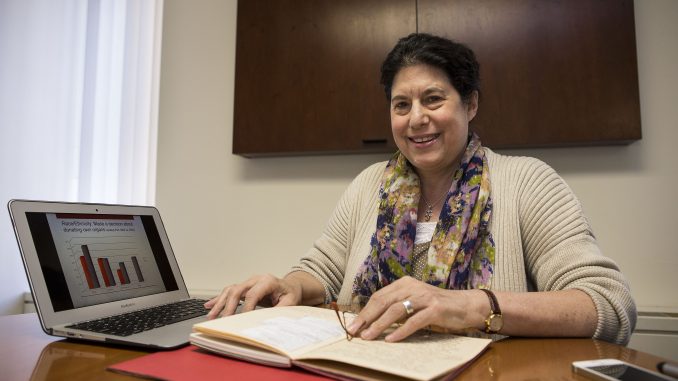
For the past three years, Dean of the College of Public Health Laura Siminoff has been a part of a global network of researchers collecting tissue samples.
The Genotype-Tissue Expression Project, or GTEx, began in 2010 and was funded by the National Institutes of Health. The seven-year study cost $150 million.
Siminoff studied the ethics of families consenting to tissue donation for their deceased family member.
The network included researchers from different institutions around the world, like Harvard University and the University of Geneva in Switzerland, and organizations, like the National Disease Research Interchange and the Roswell Park Cancer Institute.
Every cell carries genes, which are made up of DNA and proteins. There are between 20,000 and 25,000 genes in the human body. Certain genes can be linked to diseases like breast and ovarian cancer, Siminoff said. But not every person who has these genes will develop these diseases.
The study gathered tissue samples from nearly 1,000 donors to create a database of tissue samples for future research. It was completed this summer.
Researchers asked families to donate their deceased relatives’ tissue samples shortly after the person had died.
Siminoff contacted the families after they consented to donating and asked questions about their experience and understanding of consenting. She used their responses to determine the ethics of asking families after a relative’s death to donate their tissues.
“People are being asked to donate at a very difficult time,” Siminoff said. “Somebody has died, a loved one, usually it is a reasonably unexpected death, and then they were asked to donate tissues or organs for transplantation and then right on top of that they are asked to donate to this genetic, genomic project.”
Siminoff’s portion of the trial ended last year and was funded by the National Disease Research Interchange in Philadelphia.
Typically when a person dies, a local Organ Procurement Organization representative travels to the hospital, and if the person is not registered as an organ donor, they will go to the next of kin to get consent for donation.
The representative typically spends a lot of time with the family, building a relationship in person and in the hospital, Siminoff said.
Siminoff added asking for tissue donation is “a more difficult conversation” than asking for organ donations because it’s not discussed publicly as often.
Siminoff and her team also researched what caused families to agree to donate their loved one’s tissue for the study.
She found that people who did not donate a family member’s tissue were concerned with their identity remaining confidential.
“It’s complicated information,” she said. “And it’s information that is unfamiliar to most people and it’s being done in a setting of emotional distress.”
Many times a person’s memory is “fogged” after a tragic event, Siminoff said, and families often don’t remember much about consenting. Her team found that families remembered more information about the trial when given a pamphlet about the study.
Jeffrey Thomas, the Life Sciences program director for LifeNet Health, conducted molecular analysis of the tissue. LifeNet Health is a tissue bank, which is a facility where tissue is kept for future implantation, that provides surgeons with the tissues they need to serve their patients.
He worked with the National Disease Research Interchange in Philadelphia, which was given approximately $3.5 million to conduct its part in the study.
“Dr. Siminoff led a very important study to better understand how we as scientists can interact with families to appropriately inform and educate them,” Thomas said.
“Researchers from all over the world can apply to use the data,” Thomas added. “The data and everything else will probably continue on for our lifetimes. It’s really creating a tool that’s going to be used forever.”


Be the first to comment